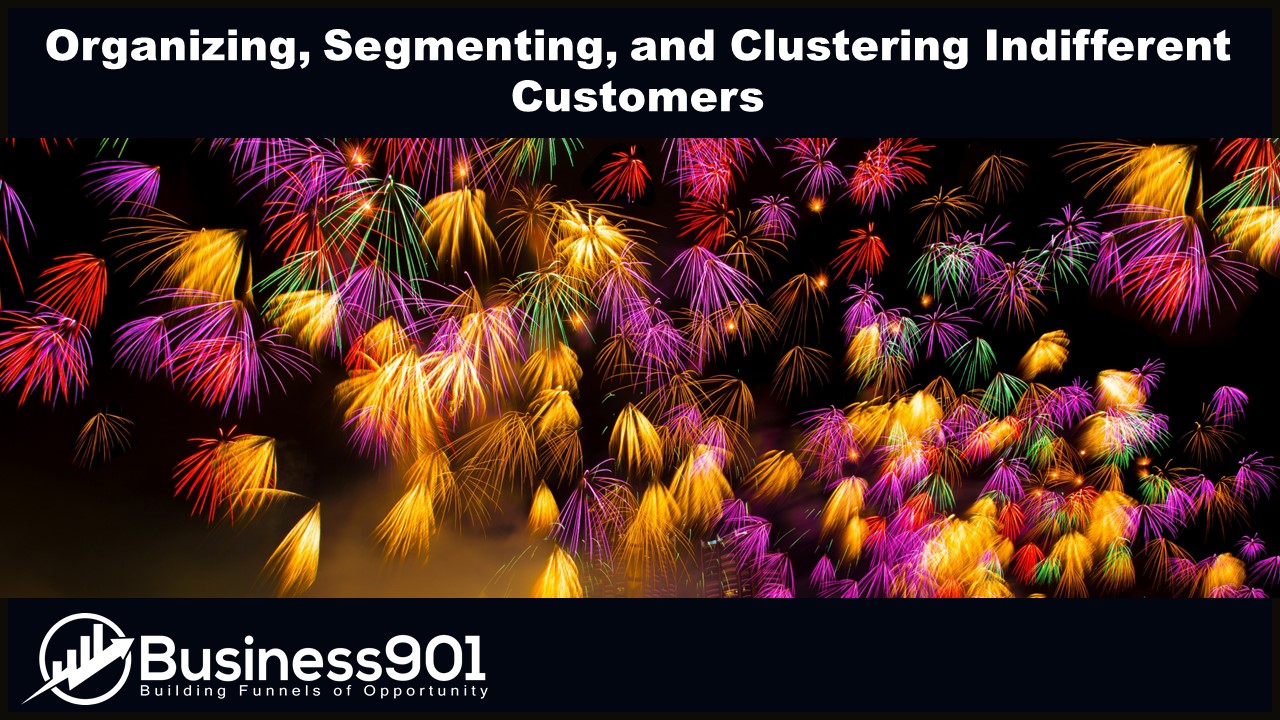Maybe you have some customers that have purchased but are not sold on your product; some of these customers even could perhaps be customers that are fence about deciding whether or not to buy your product. Find these customers and discover what they want, and you’ll gain a new perspective on your business, marketing efforts, potential sales, and your bottom line. By categorizing, segmenting, profiling, and targeting them in distinctive ways, you can drive faster growth, increase their desire to do business with your company, and accelerate positive word of mouth.
This group presents the greatest opportunity for low-cost and low-friction growth. They also offer deep insights regarding your customers’ nature and potential behavior.
Pause and consider how your strategies and tactics target extremes (the least or most likely to purchase). The reality is that most of those customers that might become highly satisfied are found between the extremes, where the potential for low-cost lies. Paying attention to this group enables you to maximize your existing data. However, even if you have actionable data on this group, you may not have profiled them accurately or correctly calculated what they can do for your business.
We’ve all seen those customers who purchased but didn’t appear to be very happy with their purchase. They aren’t promoters, and they aren’t detractors, either. They don’t discuss your product with others or recommend it to friends, family, or colleagues. Their behavior indicates they are not very satisfied or indifferent. Indifferent customers are neither promoters nor detractors. They fall into the middle ground, having neither positive nor negative feelings toward your product or company. Indifferent customers may have purchased from you but did so without enthusiasm. They may be the customers who bought the product but didn’t use it. They may not have even opened the box.
In general, it’s better to have more promoters than detractors. To grow, you need a lot more. Identifying indifferent customers is your chance to pursue low-cost, low-friction opportunities for growth. You can do this by segmenting the customers who are neither promoters nor detractors, then profiling them and targeting them with a customized message that amplifies their interests and desires.
- Analyze your data for customers who are neither promoters nor detractors.
- Who purchased but didn’t engage or purchase more.
- Who didn’t refer others to buy from you?
- Who didn’t engage with you on social media or other online forums?
- Who didn’t respond to your surveys or request more information?
These customers you’ve identified may not appear very happy with their purchase. They remain indifferent to you as a company and your products/services. They don’t love you, and they don’t hate you. They don’t have any feelings one way or the other. They are indifferent.
As you segment your customers into groups, start by categorizing them favorably, neutrally, or unfavorably. Interrogate your data to find out why they fall into each category. Then determine what they want and make it happen. Doing so enables you to acquire more customers in the good category and engage and retain customers in the unfavorable and neutral categories. Sometimes you might discover that a large portion of your customers is favorable, but a small portion is unfavorable. In this case, you may want to focus on the customers in the unfavorable category to get them to become favorable.
Neutral:
- I’m indifferent to you as a company and your products/services.
- I don’t love you, and I don’t hate you.
- I don’t have any feelings one way or the other.
- I don’t think you’re particularly innovative.
- I don’t think you’re very reliable.
- I don’t think you offer good value for the money.
Segment your neutral customers into learners, neutrals, or defectors: Based on how you’ve categorized your customers, segment them into learners, neutrals, or defectors. If a customer is favorable, leave them alone. If a customer is unfavorable, try to turn them into neutral. If they are neutral, try to turn them into a learner. To understand each segment of customers better, profile them.
- What is their demographic?
- What is their psychographics?
- What are their interests and passions?
- What are their hobbies and activities?
- What is their lifestyle?
- What is their preferred communication channel?
- What is their preferred payment method?
- What do they value?
- What are their social or cultural tendencies?
- What are their needs?
- What are their expectations?
- What are their pains?
- What are their frustrations?
- What is their source of dissatisfaction?
Target each segment with a dedicated message: Once you know what each segment wants, create targeted marketing campaigns that directly address each segment’s needs, desires, and interests. Show each segment how your product or service can benefit them. Tell each segment their story. Once you’ve done this, their purchase decision will become easier and faster. They’ll feel compelled to buy from you because you understand them, their situation, and their needs. They’ll feel compelled to be promoters for your business because you’ve taken the time to understand them and address their individual needs.
Reassess your customer categories and segments: As you steadily collect data, reassess your segments and categories. Remember that new customers may be a combination of categories or segments. Many customers will fall into more than one category or segment. You may have customers who fall into several segments. These customers may need to be addressed with several different messages. The key is constantly to reassess your customers to ensure they are properly categorized and segmented so that you can deliver the right message to the right person at the right time.

